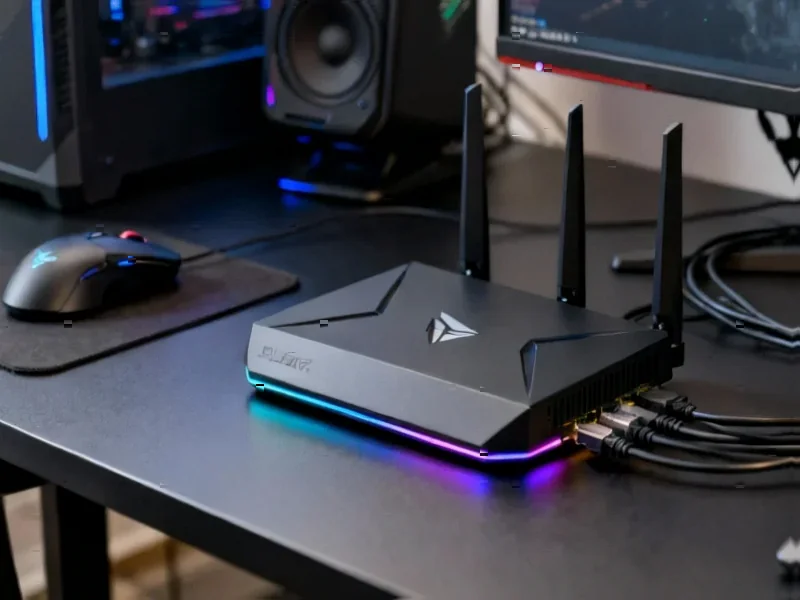According to Guru3D.com, ASUS ROG has unveiled its latest compact gaming system, the ROG GR70 Mini PC, designed for gamers seeking full desktop performance in a tiny sub-3-liter package. The system features AMD’s Ryzen 9 9955HX3D processor with 16 cores, 32 threads, and second-generation 3D V-Cache technology, paired with NVIDIA’s Blackwell-based RTX 5070 or 5060 laptop GPUs. Despite the powerful components, the GR70 maintains noise levels under 4.5 dB(A) during gaming thanks to ROG’s QuietFlow triple-fan cooling system. The mini PC offers extensive connectivity including Wi-Fi 7, Bluetooth 5.4, eight USB ports, and support for up to five 4K monitors, while featuring a toolless design for easy upgrades up to 96GB DDR5 RAM. This combination of high-end components in a compact form factor represents a significant advancement in mini PC gaming capabilities.
The Shrinking Gaming Desktop
What ASUS is demonstrating with the GR70 goes beyond just another product launch—it’s validating a fundamental shift in gaming hardware design philosophy. For years, the gaming community accepted that high performance required massive towers with elaborate cooling solutions. The GR70 challenges this assumption by proving that with sophisticated thermal engineering, you can pack Ryzen 9 and RTX 50-series performance into a chassis smaller than many gaming consoles. This isn’t just about convenience; it’s about redefining what constitutes a “serious” gaming rig. The implications extend beyond gaming to content creation and professional workflows where desk space is at a premium but performance requirements remain uncompromising.
The Quiet Revolution in Cooling
The most impressive aspect of the GR70 isn’t the raw specifications—it’s the thermal management achieving under 4.5 dB(A) noise levels. Traditional mini PCs have struggled with thermal throttling and fan noise when pushing high-performance components. ASUS’s QuietFlow triple-fan system represents what appears to be a genuine engineering breakthrough in compact cooling. This achievement suggests we’re reaching an inflection point where small form factor systems no longer require performance compromises. The cooling technology demonstrated here will likely influence laptop designs and even larger desktop systems seeking quieter operation. As the company’s product specifications indicate, this isn’t just marketing—it’s measurable progress in acoustic performance.
Changing Gaming Hardware Economics
The GR70’s configuration choices reveal strategic thinking about the future gaming market. By offering both RTX 5070 and 5060 variants, ASUS is positioning mini PCs across multiple price segments while maintaining the same core platform. This approach could disrupt the traditional gaming PC market by offering pre-configured, space-efficient solutions that compete with both gaming laptops and entry-level desktop builds. For consumers, this creates a new category between the portability of laptops and the upgradeability of towers. The timing is particularly significant as it coincides with AMD’s Zen 5 architecture and NVIDIA’s Blackwell GPUs, suggesting ASUS sees this as the ideal technological moment to push mini PCs into the high-performance mainstream.
Where Compact Gaming Goes Next
Looking 12-24 months ahead, the GR70 represents the beginning of a broader trend toward performance-dense computing. We should expect competitors to follow with similar offerings, driving innovation in cooling solutions and power delivery for compact systems. The success of this category will depend on whether manufacturers can maintain upgrade paths and compatibility with future components. The toolless design and accessible internals suggest ASUS understands that long-term viability requires some degree of future-proofing. If this category gains traction, we might see specialized components designed specifically for mini PC form factors rather than repurposed laptop parts. The GR70 could be remembered as the product that made high-end gaming truly desk-friendly without compromise.




